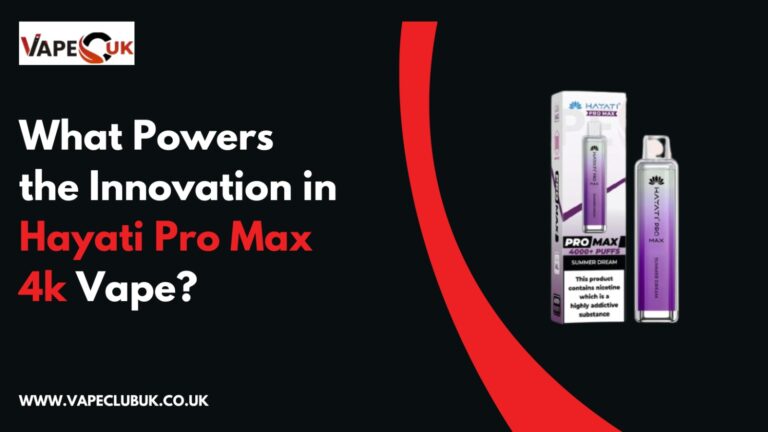Key Web Development Strategies to Boost E-Commerce Conversions
In the competitive world of e-commerce, a well-optimized website is essential for success. The design, structure, and functionality of your online store can make or break your ability to convert visitors into paying customers. To thrive in this digital landscape, businesses must adopt the right web development strategies to ensure that their e-commerce websites not only attract traffic but also drive conversions.
This article explores the key web development strategies that can significantly boost e-commerce conversions. By understanding these strategies and implementing them effectively, you can enhance user experience, improve website performance, and increase your sales.
1. Focus on User Experience (UX) Design
User experience (UX) is one of the most critical factors in determining whether visitors to your e-commerce site will convert into customers. If your site is difficult to navigate, slow to load, or visually unappealing, potential buyers are likely to abandon it in favor of a competitor.
a. Simplified Navigation
Simplifying navigation is essential to creating a seamless user experience. Users should be able to find products quickly Web Development for E-Commerce without clicking through multiple pages. Implementing a clean and intuitive menu, clear product categories, and a well-structured search function can significantly improve navigation.
b. Mobile-First Design
With the increasing use of mobile devices for online shopping, adopting a mobile-first design approach is crucial for e-commerce websites. Your site should be fully responsive, meaning it adjusts seamlessly to various screen sizes. This not only ensures a better user experience on smartphones and tablets but also improves your website’s ranking on Google, which uses mobile-friendliness as a ranking factor.
c. Clear Call-to-Action (CTA) Buttons
Strong call-to-action (CTA) buttons are a must for guiding users toward completing desired actions, such as adding items to their cart or proceeding to checkout. CTAs should be clearly visible, use actionable language, and stand out from the rest of the page by using contrasting colors and large, readable fonts.
d. Streamlined Checkout Process
A lengthy or complicated checkout process is a common reason for cart abandonment. By simplifying the checkout process, you can reduce friction and boost conversions. Here are some best practices for optimizing the checkout process:
Guest Checkout: Allow users to make purchases without creating an account, offering guest checkout options.
Auto-Fill and Save Information: Implement auto-fill features for shipping and billing information to save users time.
Progress Indicators: Show users where they are in the checkout process by using progress indicators to guide them through the steps.
One-Click Payment: Integrate payment solutions such as Apple Pay or PayPal to offer one-click payment options, making the process faster and more convenient.
2. Page Speed Optimization
Page speed is a crucial factor in e-commerce conversions. According to research, even a one-second delay in page load time can lead to a 7% decrease in conversions. This makes it imperative to ensure that your website loads quickly and performs optimally.
a. Image Optimization
High-quality product images are essential for e-commerce sites, but large image files can significantly slow down page load times. To avoid this, you can optimize your images by:
Compressing Images: Use tools like TinyPNG or JPEGoptim to reduce the file size of images without compromising quality.
Using the Correct File Format: Use JPEG for photographs and PNG for images with transparency to ensure efficient file sizes.
Lazy Loading: Implement lazy loading to delay the loading of images until the user scrolls down to the part of the page where the image is located. This reduces the initial page load time.
b. Minimize HTTP Requests
Each element on your website (images, scripts, stylesheets, etc.) makes an HTTP request to the server. The more requests your page makes, the slower it loads. Minimize these requests by combining files, such as CSS and JavaScript, into a single file and reducing the number of elements on your page.
c. Leverage Browser Caching
Browser caching stores copies of your website’s files in the user’s browser, allowing the site to load faster on subsequent visits. By enabling browser caching, you can reduce server load and improve load times for returning users.
d. Content Delivery Network (CDN)
A Content Delivery Network (CDN) distributes your website’s content across multiple servers around the world. This reduces latency by delivering content from the server closest to the user’s location, speeding up the website’s performance for global visitors.
3. Implement Effective Search Functionality
Having an efficient search function on your e-commerce website is crucial for improving user experience and driving conversions. Many customers prefer to use the search bar to find specific products, and a poorly implemented search feature can lead to frustration and site abandonment.
a. Autocomplete and Predictive Search
Adding autocomplete and predictive search features can greatly improve the search experience for users. As they type their query, relevant suggestions should appear, allowing users to find what they are looking for faster. This reduces the time spent searching and increases the likelihood of a conversion.
b. Filtering and Sorting Options
Allow users to filter and sort search results based on various criteria such as price, brand, size, color, or popularity. Filtering options make it easier for customers to narrow down their choices, making the shopping experience more efficient and enjoyable.
c. Search Analytics
Analyzing the search data on your website can provide valuable insights into user behavior. You can see what products users are searching for the most, which queries are leading to conversions, and which searches are returning no results. Use this information to optimize your product offerings and improve search accuracy.
4. Build Trust with Customer Reviews and Social Proof
Building trust is essential in converting visitors into buyers. In e-commerce, social proof plays a significant role in establishing credibility and encouraging customers to make a purchase. Web development strategies should integrate customer reviews and other forms of social proof throughout your site.
a. Customer Reviews and Ratings
Display customer reviews and product ratings prominently on product pages. According to studies, nearly 90% of consumers trust online reviews as much as personal recommendations. By allowing users to read reviews, you increase transparency and help potential customers make informed purchasing decisions.
b. User-Generated Content (UGC)
Encourage customers to share photos or videos of your products in use. Displaying UGC, such as Instagram posts, customer photos, or unboxing videos, can increase trust in your brand. You can also create a dedicated section on your website for user-submitted content.
c. Trust Badges and Security Seals
Displaying trust badges, such as secure payment logos, SSL certificates, and guarantees (e.g., money-back guarantees or free shipping), can alleviate concerns about payment security and product authenticity. Trust badges should be placed near the checkout process to reinforce customer confidence at the point of purchase.
5. Personalization
Personalizing the shopping experience can significantly increase e-commerce conversions. By showing relevant products and content based on user behavior and preferences, you can create a tailored experience that encourages users to buy.
a. Product Recommendations
Product recommendations, powered by machine learning algorithms or past user behavior, can increase sales by suggesting items that are relevant to the user’s interests. Display recommended products on the homepage, product pages, and during checkout to encourage users to add more items to their cart.
b. Dynamic Content
Personalize website content based on the user’s location, browsing history, or previous purchases. For example, show location-based promotions or display products that align with the user’s past interests. Personalized landing pages or emails can also enhance the overall experience and increase conversion rates.
c. Retargeting
Use cookies to track user behavior and display retargeting ads that remind visitors about products they viewed but didn’t purchase. Retargeting ads can be shown on social media, Google, or other websites, and they serve as gentle reminders to encourage users to complete their purchases.
6. Optimize for Voice Search
With the growing popularity of voice-activated devices like Amazon Alexa and Google Home, optimizing your e-commerce website for voice search is a forward-thinking strategy. Voice search optimization helps capture users who search using conversational queries, which are often longer and more specific than traditional text-based searches.
a. Use Natural Language in Product Descriptions
To optimize for voice search, use natural language in your product descriptions. Voice searches tend to be longer and more conversational, so focus on answering common questions that users might ask.
b. Focus on Long-Tail Keywords
Voice search queries often contain long-tail keywords, as users typically ask specific questions. Incorporate long-tail keywords into your content, meta descriptions, and product listings to increase your chances of being featured in voice search results.
c. Optimize for Featured Snippets
Featured snippets, also known as “Position Zero,” are often the result of voice searches. Ensure that your website content is optimized to provide concise, clear answers to common questions, increasing the likelihood that your content will be used as a featured snippet.
7. Implement A/B Testing and Conversion Rate Optimization (CRO)
A/B testing is a powerful tool for optimizing e-commerce websites. By testing different versions of your website’s elements, such as product pages, CTAs, or checkout processes, you can identify which designs, layouts, or copy lead to the highest conversion rates.
a. Test Various Elements
Conduct A/B tests on elements such as:
CTA Buttons: Test the size, color, and text of your CTA buttons to see which version drives more conversions.
Product Page Layout: Experiment with different layouts, such as the placement of images, product descriptions, and reviews, to improve engagement.
Checkout Process: Test different checkout processes to identify the most streamlined version that reduces cart abandonment.
b. Continuous Optimization
Conversion rate optimization (CRO) is an ongoing process. Regularly review your analytics, conduct tests, and make iterative improvements to your website based on the results. By continuously optimizing your e-commerce website, you can stay ahead of the competition and improve conversion rates over time.
Conclusion
In the dynamic world of e-commerce, success depends on more than just attracting visitors to your website—it’s about converting those visitors into customers. By focusing on user experience, optimizing website speed, implementing effective search functionality, building trust, personalizing the shopping experience, and optimizing for voice search, you can significantly boost your e-commerce conversions.
Additionally, using A/B testing and CRO techniques will ensure your website is continuously improving, allowing you to adapt to changing consumer behaviors and preferences. These key web development strategies will help you build a high-performing e-commerce website that drives growth, increases sales, and positions your business for long-term success in the competitive digital marketplace.




